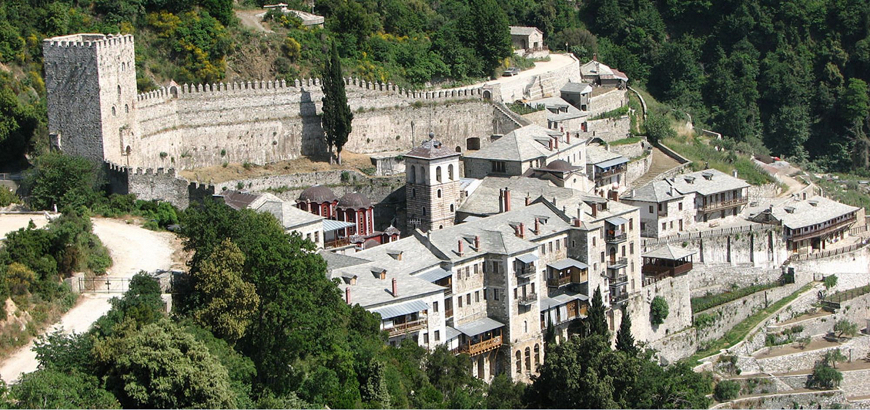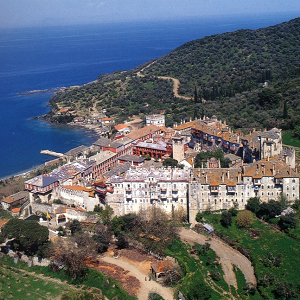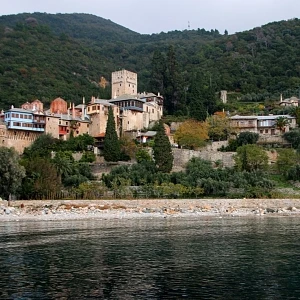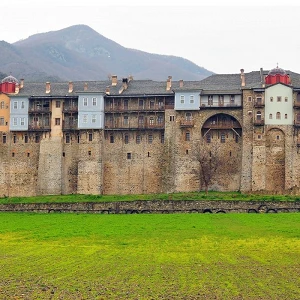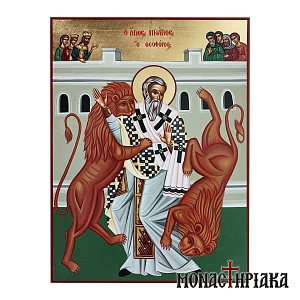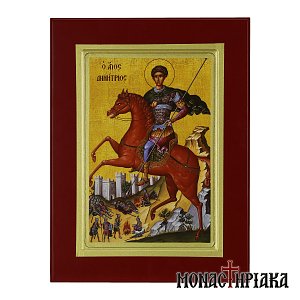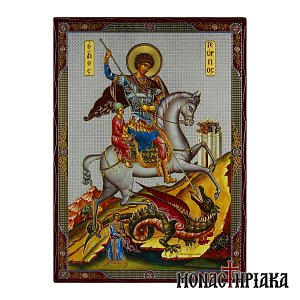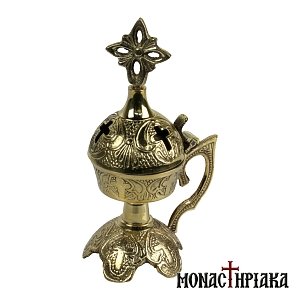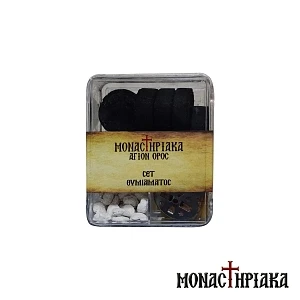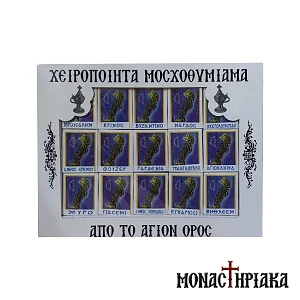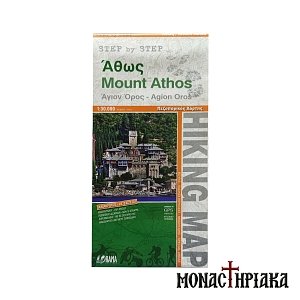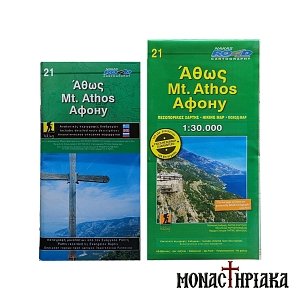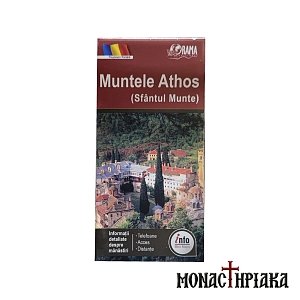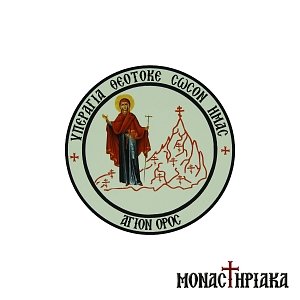Where is the Holy Monastery of Agios Pavlos?
The Holy Monastery of Agios Pavlos (Saint Paul) is the southernmost monastery on the western side of Mount Athos and is commemorated on the Hypapante - Presentation of Jesus at the Temple (February 2).
The Monastery is located at an altitude of 140m. and just 20 minutes from the sea. Today the Holy Monastery of Agios Pavlos is in the 14th place in the ranking of the Holy Monasteries.
When was the Monastery of Agios Pavlos founded and who is the founder?
The founder of the monastery is Saint Paul of Xeropotamou, who was also the founder of the Xeropotamos monastery near Dafni, the port of Mount Athos. In fact, during the 10th and 11th centuries there are two monasteries with the name Xeropotamou on Mount Athos, since the current monastery of Agios Pavlos was established with this name permanently from 1108 onwards.
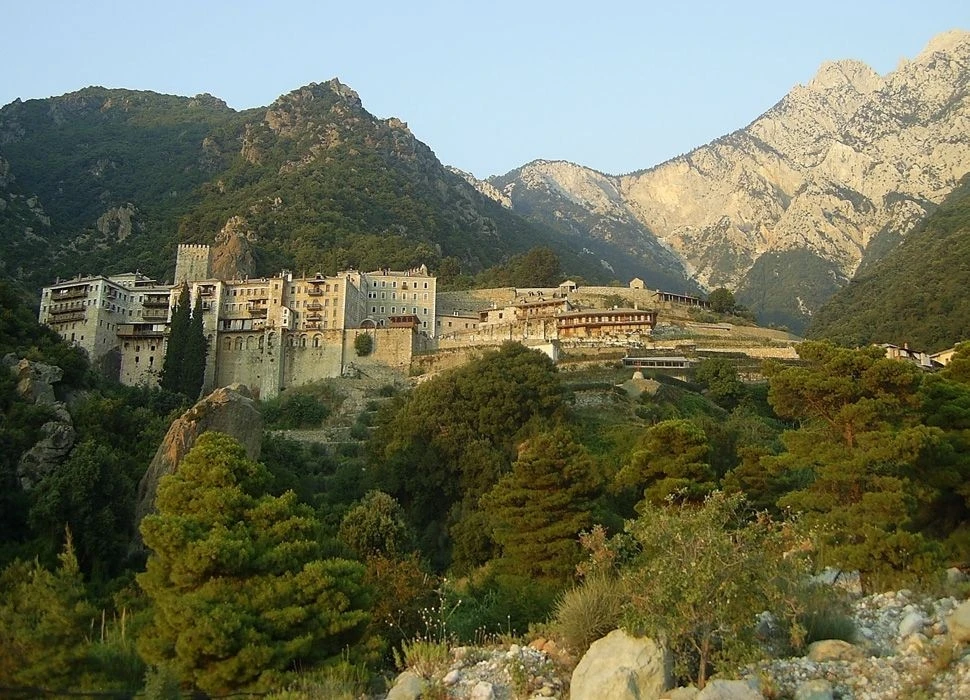
The Holy Monastery of Agios Pavlos over the centuries: the history of the Monastery
At the beginning of the 14th century, the Monastery of Agios Pavlos was looted, destroyed and deserted. The successive hardships suffered by the Monastery made it a Cell, i.e. a part of the Xeropotamou Monastery. However, in 1365 the Monastery came under the jurisdiction of two Serbian monks of aristocratic origin, Gerasimos Radonias and Antonio Pigasis.
Their presence particularly benefited the Monastery, which was recognized as eighteenth in the hierarchy of holy monasteries in the third Typical of 1394. A few years later, in 1401, the Holy Monastery of Xeropotamou recognizes for the first time as independent the Monastery of Agios Pavlos in an official document of the Patriarch Matthew.
Periods of prosperity and decline in the monastery
In the 15th century, the Monastery was strengthened by John VII and VIII Paleologos, the Serbian ruler Giur and his brother Lazarus. Many other rulers from the Danube regions, Romanians and Greeks, were benefactors of the Monastery. Thus, the Monastery of Agios Pavlos regained its strength and in the 15th century the northern side was built, while in the 16th century the defense tower of the monastery was erected.
The heyday of the 17th century was followed by the decline of the 18th century due to a lack of financial resources, after the harsh taxation by the Turkish authorities. At the end of the 18th and the beginning of the 19th century, monk Grigorios and archimandrite Anthimos Komnenos helped the monastery to recover and paid off the debts.
In 1817, the construction of the Church began and was completed in 1844, on St. George's Day. Until today many more repairs and additions took place in the Monastery.
The last catastrophic event suffered by the Monastery of Agios Pavlos was the fire of 1902, and then the flood of 1911.
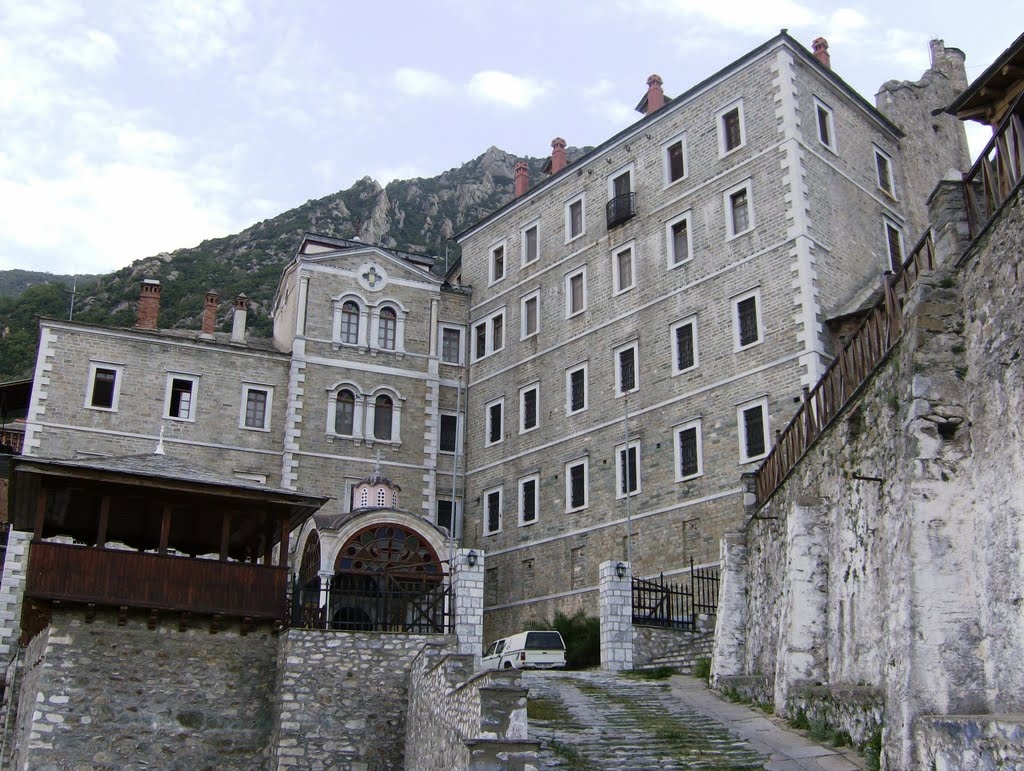
The chapels of the Monastery of Agios Pavlos
The Monastery of Agios Pavlos has nine chapels located within its monastic complex. What stands out mostly is the chapel of Saint George, one of the oldest buildings of the monastery, which dates back to the 15th century. This chapel is decorated with important and admirable frescoes of the Cretan school of the year 1554, works of the iconographer Antonio, according to an inscription.
The Accessories of the Monastery of Agios Pavlos: Tabernacles, Cells, Seats, Quiet Rooms
The Monastery of Agios Pavlos includes two Sketes: the picturesque New Skete or Skete of the Presentation of Theotokos and the Romanian Skete of Saint Demetrius, also known as Lakkoskete.
In addition, three cells in Karyes, the capital of Mount Athos, belong to the Monastery: the cell of Saint Andreas, where today it is the representative office of the Monastery, the cell of Saints Theodors, located one hundred meters NW of the representative office and the cell of Hepapanti.
Among the metochia of the Monastery of Agios Pavlos are two Kathismata and six Hermitages: the Kathisma of Virgin Mary, in a location NW of the Monastery at a distance of 20 minutes on foot, and the Kathismaof Saint Prodromos in the same direction. The six Hermitages of the Monastery are located between Agios Pavlos Monastery and Nea Skete. These Hermitages are of the Holy Trinity, Daniel, Damascene, Joseph, Zarkadi and Hairi Hermitage.
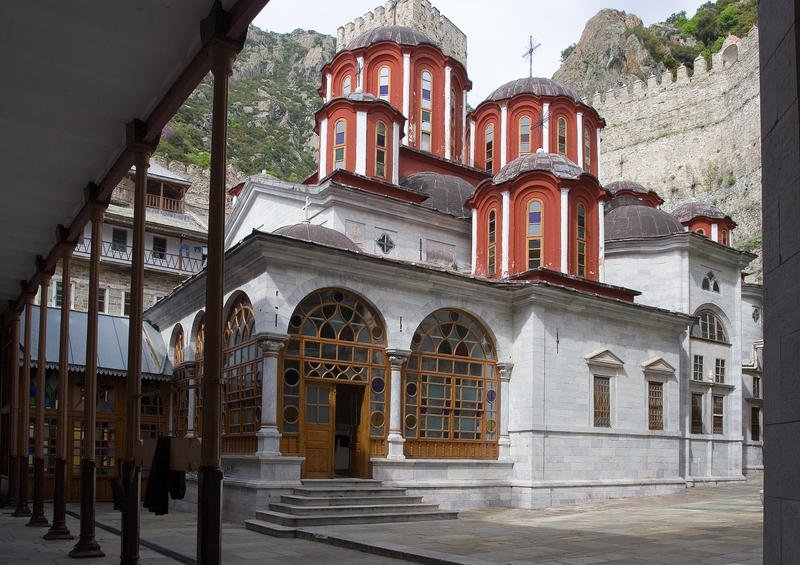
The relics and the Library of the Monastery of Agios Pavlos
The relics of the Monastery of Agios Pavlos include Holy utensils and vestments, a piece of Holy Wood, as well as the foot of Saint Gregory the Theologian.
One of the most important relics of the Monastery is due to Mara, daughter of the Vranković family and wife of Sultan Murat II, who sent the precious Gifts of the Three Magi to the Monastery of Agios Pavlos, when they had fallen into the hands of the Turks.
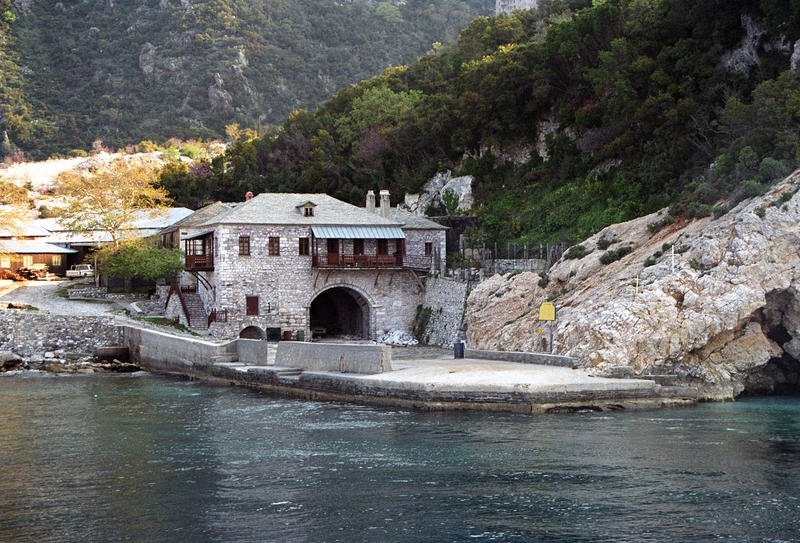
As we know, these Gifts are gold, frankincense and myrrh. The frankincense and myrrh are preserved as a mixture in small pellets, while the gold is in the form of twenty-eight carved tiles. With a sultanic document kept in the archives of the Monastery, the information about the delivery of the Sacred Gifts is validated.
In addition, in the sacristy of the Monastery is kept an extraordinary shepherd's cross with pearls and 40 miniatures.
Panagia Myrovlitissa 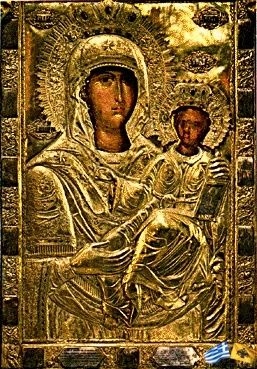
In the Monastery of Agios Pavlos there is the icon of Saint George and the icon of Panagia Myrovlitissa. According to testimonies, the icon of Panagia Myrovlitissa was located in the well-known monastery of Constantinople, with the name of Myrelaiou.
Saint Pavlos Xiropotaminos took the icon from there and transferred it to the second monastery he founded, that is, to the Monastery of Agios Pavlos. At some point this holy icon began to exude myrrh and for this reason it got the name Myrovlitissa.
In the library of the Holy Monastery of Agios Pavlos, 494 manuscripts and over 12,000 printed books have been stored.
Contact with Monastery of Agios Pavlos:
Phone: +30 23770 23741, +30 23770 23905
Email: [email protected]
